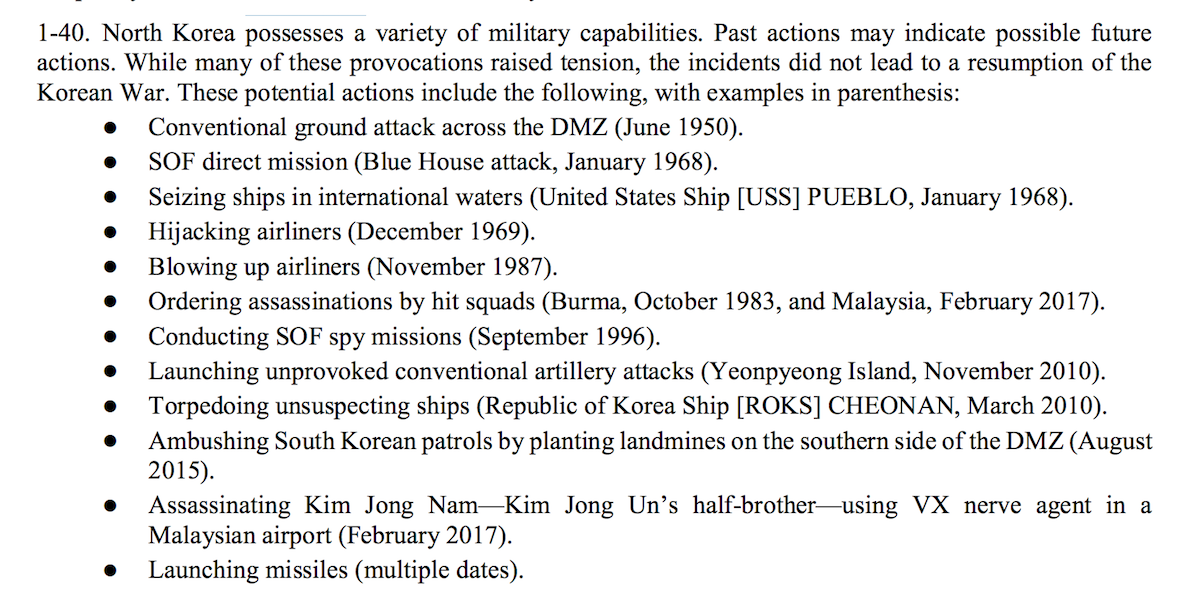North Korea’s military “uses tactics based on former Soviet or current Russian doctrine, Chinese developments, lessons learned, and observation of recent military actions,” according to a new US Army manual on the subject.
“While North Korea maintains large amounts of military equipment, much of it is outdated making it quantitatively superior to most armies but qualitatively inferior,” the new manual said. See North Korean Tactics, Army Techniques Publication (ATP) 7-100.2, 24 July 2020.
But North Korea has proved resourceful in other areas, including offensive cyber warfare.
“The primary organization responsible for computer warfare in North Korea is Bureau 121, which fielded at least 1,000 elite hackers in 2010 who focused on other countries’ computer systems. This number is likely much higher now” and includes “cyberspace teams [deployed] in foreign countries.”
And not least of all, “The country’s possession of a nuclear arsenal and its pursuit of missile technology are attempts to ensure that external powers do not interfere with its internal affairs for fear of a nuclear reprisal,” the Army manual said.

“North Korea is constantly adapting and evolving its capabilities,” the Army said.
To maximize clean energy deployment, we must address the project development and political barriers that have held us back from smart policymaking and implementation that can withstand political change. Here’s how.
At a time when universities are already facing intense pressure to re-envision their role in the S&T ecosystem, we encourage NSF to ensure that the ambitious research acceleration remains compatible with their expertise.
FAS CEO Daniel Correa recently spoke with Adam Marblestone and Sam Rodriques, former FAS fellows who developed the idea for FROs and advocated for their use in a 2020 policy memo.
In a year when management issues like human capital, IT modernization, and improper payments have received greater attention from the public, examining this PMA tells us a lot about where the Administration’s policy is going to be focused through its last three years.